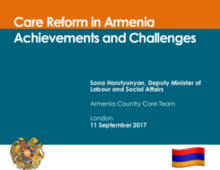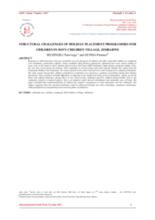Displaying 1511 - 1520 of 2214
The purpose of this study is to determine which factors associated with foster care agencies contribute to higher levels of foster carer satisfaction.
This study examined visual recognition memory and executive functioning (spatial working memory, spatial planning, rule learning, and attention shifting) in 12-year-olds who participated in the Bucharest Early Intervention Project, a randomized controlled trial of foster care for institutionally reared children.
This report explores the challenges of implementing and evaluating relationship-based interventions for young people with experience in the U.S. foster care system and presents recommendations for both practitioners and researchers for successful implementation and evaluation in the future.
This presentation by the Minister of Health, Labour and Social Protection of Moldova outlines the basic demographic data of Moldova and provides a thorough review of the situation of children's care, and care reform efforts, in the country.
This presentation from the Deputy Minister of Labour and Social Affairs of Armenia provides an overview of the demographic data of Armenia and offers a thorough review of the situation of children's care, and care reform efforts, in Armenia.
This presentation by key actors in children's care reform in Ghana provides an overview of the demographic data of Ghana and offers a thorough review of the situation of children's care, and care reform efforts, in the country.
This study observed the challenges experienced by children living in SOS Children's Village Bindura, Zimbabwe during a Community Holiday Visit Programme.
This presentation by the Principal Probation and Welfare Officer of Uganda outlines the basic demographic data of Uganda and provides an overview of the situation of children's care, and care reform efforts, in the country.
This report explores federal programs available to support youth aging out of foster care in the US.
This study explored whether receipt of early care and education services reduces the likelihood of foster care placement for children aged 0-5 years in the United States.






